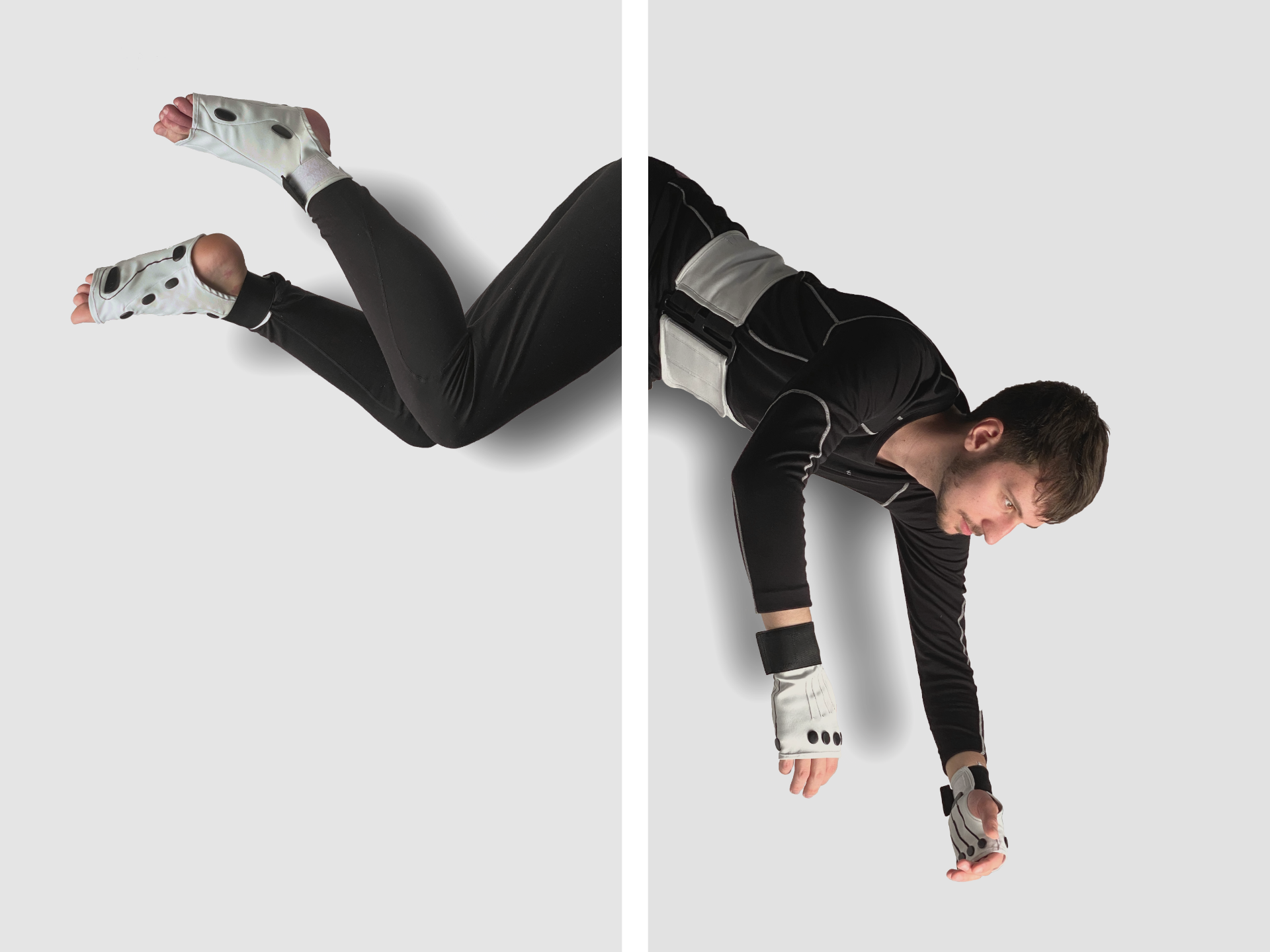Umbilical
2022A set of magnetic garments that help astronauts
with a lack of sensory input in space.
Space exploration has framed astronauts as honest, able and professional individuals who put a human face on the grandest technological endeavour in history. And yet, their humanity has long been overlooked in the name of efficiency. While you can ignore human needs for short bursts of time, it will take a crew two years to get to Mars and back, which makes engineering astronauts out of the equation psychologically impossible. Therefore, we need to shift design thinking to a human-centric approach.

Umbilical stems from the observation that the human body can not interpret signals correctly without gravity. Astronauts often speak about the lack of direction aboard the ISS, and how they feel as if they were laying on a bed all day long.

The aim of this system is to meaningfully recreate select sensations of gravity in a weightless environment. Gloves, footwear and waist belts that contain magnets can attach to spaceship walls and furniture, holding the astronaut down without the need for them to actively hold onto anything.

These interactions allow for small moments of mindfulness throughout the day, like guided meditation, yoga, group activities or window watching, which aim to slowly reteach how to experience fundamentally human sensations in such an unfamiliar environment.

Astronauts have to do some amazingly complex things, and they live in one of the harshest environments know to us. This may make them seem infallible, but in the end, astronauts are people first and foremost, and they deserve to feel human.